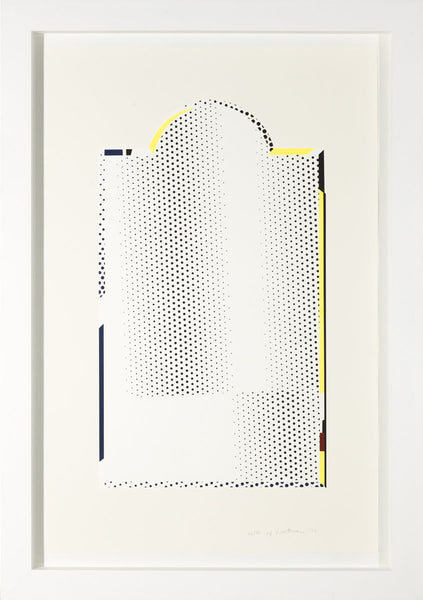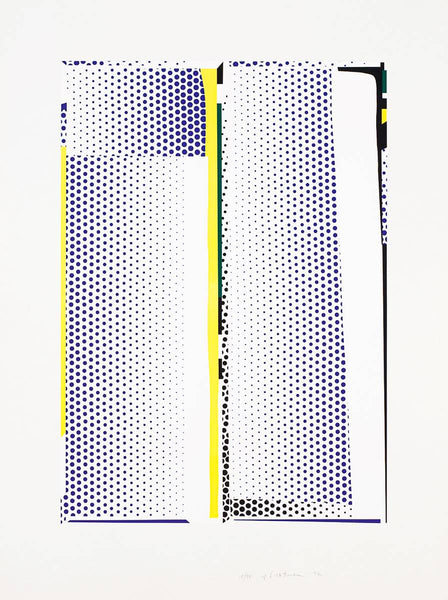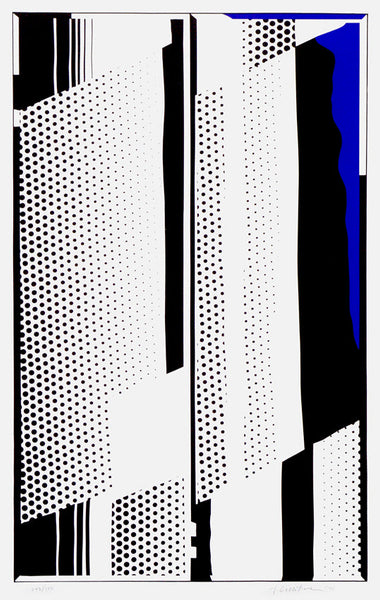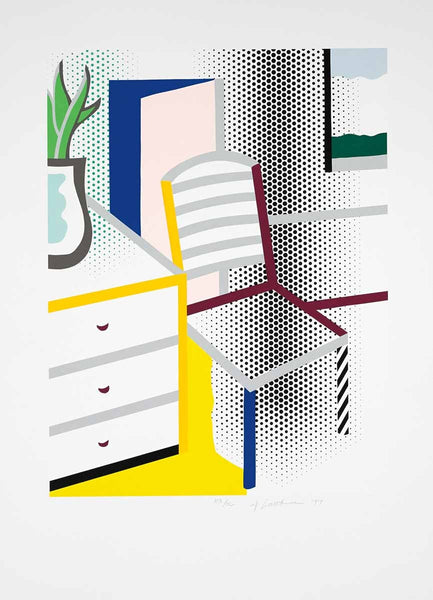
Roy Lichtenstein is considered one of the first American Pop Artists to achieve a level of global prestige. Lichtenstein was passionate about the abstract qualities of his images and their subject matter. Yet, his signature style of Pop art truly took form in 1961, which was primarily inspired by advertisements and comic strips. Not one to shy away from controversy, Lichtenstein’s work was often the subject of criticism due to his use of parodying American popular culture and of the art world itself. Overall, his unique style, that blended aspects of mechanical reproduction with traditional methods of painting, created work that would later be some of the most recognizable of the Pop Art movement.
Roy Fox Lichtenstein was born in New York City on October 27, 1923. He grew up in Manhattan’s Upper West Side and had a passion for science and comic books. His father, Milton, was a successful real estate broker and his mother, Beatrice, exposed Lichtenstein to many aspects of New York culture by taking him to museums, concerts, and other functions. In his teens, his interest in art grew as he began drawing and taking courses on watercolor and sculpture. Later, he attended Ohio State University before being drafted to serve on European front for World War II. He then returned to Ohio State in 1946 to finish his undergraduate degree and received his Master’s in Fine Arts in 1949.
In the late 1940s and early 50s, Lichtenstein began working in series, often taking artistic subjects from mythology and American history and folklore. Lichtenstein decided to an ironic reexamination of the nineteenth-century American genre paintings he saw in history books; creating Cubist interpretations of “Cowboys and Indians” amongst other Wild West characters, with a sense of faux-primitive whimsy.
While teaching at Rutgers University in the early 1960s, Lichtenstein began experimenting with different subjects and methods. Instead of painting abstract, subject-less canvases, Lichtenstein remodeled his new style much after the comic books and adverts he grew up reading. During this time, he painted his best-known work from this period entitled “Drowning Girl” and “Whaam!”. This later work of which, painted in 1963, was heavily inspired by the 1962 issue of DC Comics’ All-American Men of War. Lichtenstein also created works featuring classic, well-known cartoon characters such as Mickey Mouse and Donald Duck. As Lichtenstein became steadfast in his new style, his work grew grander in both size and reputation. In 1964, he received a commission to paint a large-scale mural for the New York State Pavilion as it hosted the years “World’s Fair”; the mural of the laughing woman by visitors from all over the world. By 1969, Lichtenstein held a large exhibition of his work at the respected Guggenheim Museum.
During the 1970s, Lichtenstein started experimenting with a reoccurring theme that referred to the art of early 20th century masters like Pablo Picasso, Henri Matisse, and Salvador Dalí. Works such as “Woman with Flowered Hat” (1977) to “Bedroom in Arles” (1992) was created from this inspiration. In the 1980s and ‘90s, Lichtenstein began painting representations of different subjects including modern house interiors, brushstrokes and mirror reflections, all in his trademark cartoon-like style. His art became increasingly popular with both collectors and influential art dealers like Leo Castelli and the pop artist had soon found himself in high demand. Lichtenstein received many large-scale commissions throughout his career and has been continuously exhibited on an international scale; hosted at institutions like the Museum of Modern Art in New York, Musée de Louvre in Paris France to name a few. Overall, Lichtenstein was best known for his paintings based on comic strips, that focused on themes of passion, romance, science fiction, violence, and war. His use of Pop culture and his distinctive style set him apart from her other Pop artist counterparts, and the images became iconic in their own right.
Lichtenstein was committed to his art until the end of his life, often spending at least 10 hours a day in his studio. In August 1997, Lichtenstein fell ill with pneumonia. He died unexpectedly of complications from the disease on September 29, 1997, at the age of 73, in New York City. Martin Lawrence Galleries is honored to have select works of Roy Lichtenstein’s, which can be viewed here.





